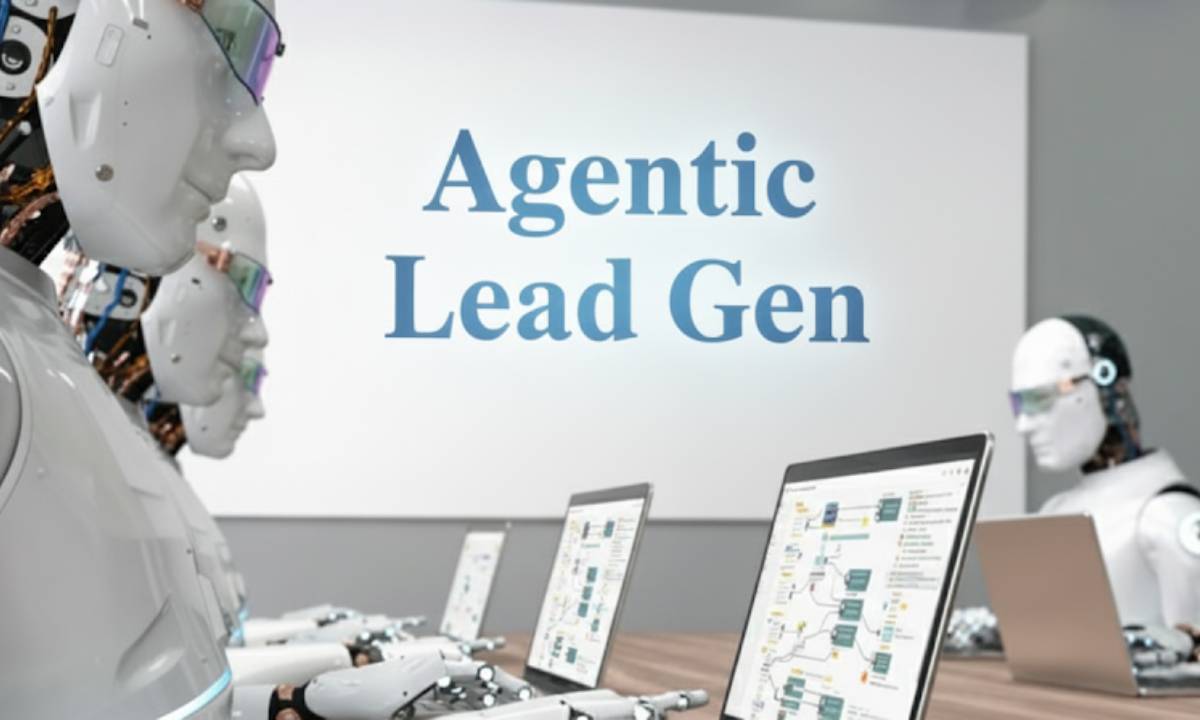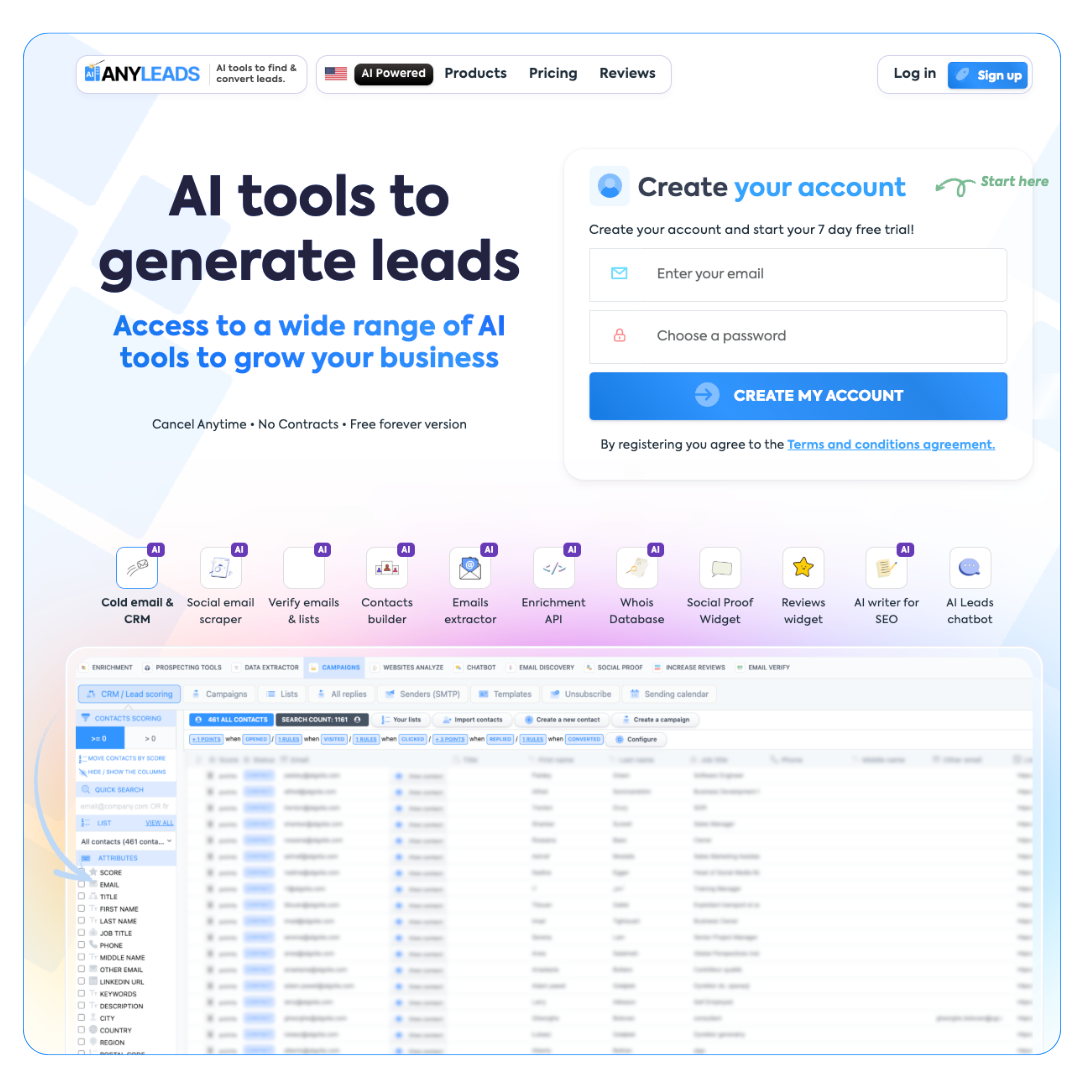 LIMITED SPOTS
All plans are 30% OFF for the first month! with the code WELCOME303
LIMITED SPOTS
All plans are 30% OFF for the first month! with the code WELCOME303

 LIMITED SPOTS
All plans are 30% OFF for the first month! with the code WELCOME303
LIMITED SPOTS
All plans are 30% OFF for the first month! with the code WELCOME303


Traditionally, sales prospecting has always been the most grueling part of the sales cycle. Sales reps spend much time scraping data, crafting messages and qualifying leads. Given the highly individualized nature of the sales cycle and the large amounts of data involved, even the best-orchestrated outreach campaigns are at risk of slipping into the trap of “personalization at scale” that feels anything but personal.
Furthermore, the tools used to manage the process rarely connect seamlessly, leaving sales reps juggling fragmented workflows. The result is wasted time, inconsistent messaging and prospects churning before the conversation begins.
This is where Large Language Models (LLMs) and agentic pipelines come into play. Instead of wasting time on repetitive tasks such as data scraping and lead scoring, these systems can chain together reasoning steps to improve the efficiency of the sales cycle and help sales teams target more qualified leads.
This guide highlights the role of agentic LLM pipelines in transforming the sales cycle and how sales leaders can explore LLM-driven prospecting. We include expert insights and practical examples.
Agentic LLM architecture is a structured design approach that enables an LLM to act as an independent intelligent module rather than a passive model. The agentic architecture gives the LLM some agency, meaning it can decide, act and adjust its overall behavior to achieve a specific goal.
As David Kemmerer, the CEO of CoinLedger, notes, “An agentic LLM pipeline isn't conventional automation; it is orchestration. Instead of firing off one-off user prompts, it links multiple reasoning steps into a complex system that can actually think through the sales journey and make decisions.”
Agentic pipelines are designed to act as virtual assistants who can handle the complex tasks of the sales cycle, such as enriching data, tailoring outreach campaigns and even adapting to different scenarios based on customer responses.
An agentic LLM pipeline handles a wide range of tasks in a typical sales cycle. It is designed to move prospective customers smoothly from the discovery phase to engagement in a connected, automated workflow. Agentic AI is particularly transforming the following use cases:
Sales teams use agentic AI to manage their email, CRM and market data to unearth the most promising leads. They can prioritize leads based on buying behavior, intent signals and product fit.
Volodymyr Lebedenko, the Head of Marketing at Hostzealot, says that agentic AI has drastically cut down their research time per lead: “Before the development of AI and agentic pipelines, our marketing and sales team spent tens of hours manually cross-referencing technographics, firmographics and user intent signals across fragmented tools. However, with an agentic LLM pipeline, we have automated this workflow fully: the LLM scrapes user intent signals from competitor reviews, job postings and developer forums, enriches the data in our CRM and outputs a prioritized list of prospects that match our infrastructure solutions. Since integrating agentic LLM pipelines into our workflow, we have cut research time per lead by approximately 50% and improved our lead-to-demo conversion by 25% because our outreach campaigns are now hyper-targeted.
Imagine walking into a sales meeting and your AI agent has already gathered tailored pitch decks, latest industry insights, and relevant case studies. Everything is customized for that specific prospect and neatly arranged in a presentable format.
That power of agentic AI helps Ollie Duff, the chief marketing officer at Koalify, save a lot of time and focus on what matters most: “Trust and timing are key in mortgage brokering. We use agentic LLM pipelines to ensure our brokers walk into client meetings armed with relevant information that matters to that specific client.
Before a meeting is set up, our AI agents automatically pull the latest property market trends in the prospective client’s region, compare current lending policies across banks, and assemble case studies of similar clients we have successfully helped. The agent also drafts a tailored presentation highlighting options aligned with the prospect’s long-term financial goals.”
“The difference is huge,” he tells us. “Instead of spending time gathering data and building slides, our brokers focus on preparing for a real conversation that involves listening, anticipating questions, and thinking through scenarios.
Our clients notice it too; when you sit down with them and already know the challenges in their preferred suburb or the most recent changes to lender criteria that affect them, it builds immediate trust and credibility.”
No more late-night data entry and manual checks. AI agents can update your CRM in real-time, enrich customer profiles, and flag missed opportunities based on conversion patterns.
The chief marketing officer at Custom Writings, Lidiia Yushchenko, has witnessed the power of AI agents in CRM management first-hand: “We use LLM pipelines to make our CRM a living system rather than a static database. The pipeline mainly enriches customer profiles by pulling in behavioral signals such as the type of content a student interacts with most, and then it categorizes them into dynamic segments. This structure allows us to run outreach campaigns that feel genuinely personalized.”
She also tells us that AI agents help her with client communication. “The LLM drafts context-aware messages directly inside our CRM, adopting tone and depth based on prior interactions. For instance, first-time users receive a concise, supportive message about navigating our EdTech services. In contrast, repeat customers might receive a proactive note about our loyalty programs or advanced features. This strategy has helped us cut down time spent on manual message drafting by 60% and improved response rates by approximately 20%.”


While the mechanics of agentic LLM pipelines are compelling, their real value shows up in the endless outcomes they unlock for sales teams. This technology offers a wide range of advantages that traditional prospecting models can’t match:
Personalization at scale: AI agents can generate messages that reflect a prospect’s unique context, referencing recent market moves, company news, or product usage.
Adaptability to changing buyer signals: Since these pipelines are designed with feedback loops, they can easily adjust messaging and targeting in real time. If engagement drops, the system can pivot tone, lead prioritization, or channel based on fresh signals.
Efficiency gains compared to SDR-heavy processes: Traditional sales prospecting consumes valuable SDR time with manual research, list building, and message drafting. AI agents can automate these steps, freeing sales reps to focus on higher-value conversations and long-term strategy instead of wasting time on administrative tasks.
Integration with existing CRMs and sales stacks: Rather than replacing your sales infrastructure, agentic pipelines easily plug into CRMs and outreach platforms. This enables automated logging interactions, ensures data consistency, and supports smoother handoffs between AI-driven prospecting and human-led closing.
Even the most advanced agentic LLM pipelines are only as good as the data they are built on. Poor data quality often leads to misclassification, irrelevant targeting, and hallucinations. Without strong data hygiene and proper guardrails, sales teams risk sending error-filled outreach campaigns that undermine trust instead of building it.
Zoe Rice, the marketing manager of 3 Men Movers, agrees, “The biggest danger with integrating AI agents into sales workflows isn’t the AI itself, it is blind trust. If you don’t put proper safeguards in place, you risk spamming prospects with convincing nonsense.”
Another layer of risk comes from compliance and ethics. Sales outreach powered by advanced LLMs can inadvertently cross lines around consent, privacy, or regional regulations. “Respecting privacy is not optional. Agentic LLM pipelines must be designed with compliance in mind, or you will burn trust and credibility faster than you build them,” says Sam Jacobs, the chief marketing officer at Ammo. “AI-generated messages can easily veer off into spam if you fail to manage the frequency and targeting carefully,” he adds.
Looking ahead, the role of AI agents in sales teams will expand rapidly from a simple support tool to a core part of the prospecting engine. Instead of sales teams spending the majority of their time drafting outreach campaigns and qualifying leads, AI agents will take over these tasks completely. However, this shift won’t eliminate the human role; it redefines it. Sales teams will spend more time interpreting intent, nurturing relationships, and shaping overall strategy.
David Pickard, CEO of Phonexa, predicts the same thing: “In the near future (3-5 years or sooner), most outbound campaigns will be drafted by AI, and human experts will spend their time refining strategy instead of chasing lists.”
Adoption of these pipelines is expected to accelerate over the next few years as tools become more reliable and early adopters showcase tangible ROI. “We may see a bifurcation in sales organizations: teams that embrace AI for scale and efficiency and those that lag behind with manual processes that prospects increasingly recognize as generic,” notes David.


AI agents will inevitably continue to advance rapidly. The efficiencies gained from this technology are undeniable. Therefore, it is critical for sales teams to embrace and learn how to work with it. The tools won’t replace the human role in the sales process but amplify it.
At its core, great selling is still about building credibility and trust, understanding customer needs, and showing up consistently with the right message at the right time. Agentic AI can now support the human connection with great precision.